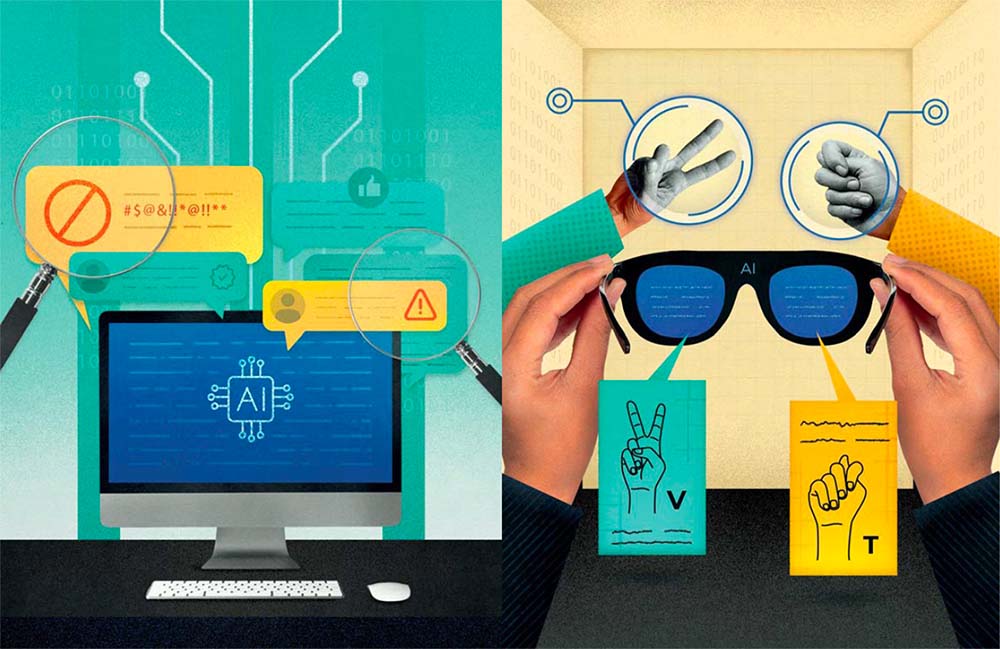
During his senior year as an undergraduate at Yale, Drew Prinster completed a global health certificate program. His capstone project focused on the use of AI tools to predict patient diagnoses and improve health care quality. But as he conducted his research, he noticed that there were virtually no guardrails in place guiding the development of these tools. Unlike with pharmaceuticals and medical equipment, there has been very little government policy or wider consensus on standards to ensure the safety and security of AI deployments in health care.
“My optimism for AI’s potential in health care shifted toward prioritizing the question, ‘How do we ensure responsible deployments of this technology in the health care field?’” Prinster recalls.
Now a fourth-year PhD student in computer science at Johns Hopkins, Prinster is still addressing questions about the safe use of AI in health care. Those questions are central to his work as a doctoral fellow in the JHU + Amazon Initiative for Interactive AI (AI2AI). The Whiting School program, which launched in 2022, is a novel industry-academia partnership designed to advance technologies in machine learning, computer vision, natural language understanding, and speech processing.
Amazon has a longstanding relationship with the Whiting School, says Sanjeev Khudanpur, director of the AI2AI program and an associate professor of electrical and computer engineering. The company has collaborated with the school’s faculty for well more than a decade. Khudanpur himself worked on the speech recognition functionality that eventually went into the Amazon Echo.
“[AI2AI] took those one-off interactions and formalized them into a program where two things happen: They bring us interesting problems for us to work on, and we use our ideas and thinking to solve problems and do research that they can’t always pursue,” says Khudanpur, who also directs the Center for Language and Speech Processing.
This partnership is especially timely, as securing diverse funding for large-scale academic research programs is increasingly important. Industry investment plays a vital role in developing the ideas that will shape the way we live and work with AI—and the people who will make those discoveries.
Central to the program are the AI2AI doctoral fellowships, which provide a year of funding for Whiting School doctoral students like Prinster. To apply, PhD students write a research statement that summarizes their AI focus area. While successful applications usually correlate with one of Amazon’s research interests, the fellow’s research remains self-directed. Each fellow is matched with an Amazon liaison, a company scientist who provides feedback and ideas, and they are encouraged to collaborate over the course of the fellowship.

In Prinster’s project, conversations with his Amazon liaison helped him consider additional use cases for his research, in- spiring him to expand from AI deployment reliability in health care to monitoring large language models (LLMs) to detect potentially dangerous outputs. His original research statement focused on the “uncertainty quantification” component of AI—how the system can flag for an end user (say, a doctor) when the system’s predictions are potentially less reliable or trust-worthy. After discussions with his Amazon liaison, he’s widened his research scope to include notifying a system administrator or regulator when illicit content or threats appear in chatbots.
“If you had an LLM, you may want to review the prompts given to it by users, as well as the output text generated, to detect things like hate speech, misinformation, or certain agreed upon generated text that could be harmful to users, to flag that for an administrator to determine when they need to intervene,” Prinster explains. Because of the significant privacy implications of analyzing prompts, review of user input must be conducted in a way that ensures both user privacy and data security. Robust anonymization techniques, clear data handling policies, and even user consent mechanisms could help mitigate these risks.
A Wider View of AI Research
Amazon benefits from the interaction with the students, too. For one, Khudanpur says, collaborating with the AI2AI fellows can help Amazon scientists make valuable and direct connections to research happening in the academic AI community, offering them fresh perspectives that complement their product development work.
Aparna Khare, a principal applied scientist at Amazon, is a three-time AI2AI liaison. She says mentoring younger scientists is fulfilling and intellectually stimulating.
“I like that I’m able to look at something with the fellows from a pure research point of view and to advance the idea without the immediate considerations of product integration,” she says.
“Of course, in industry, you want to build products and new technologies that directly address customer needs and solve some of the world’s most challenging problems. This drive to create impactful solutions often leads us to explore fundamental questions that can unlock even greater innovations. This type of program is incredibly valuable in ensuring we make progress both in delivering for our customers today and in advancing the foundational knowledge that will shape the future.”
Developing a Mindset for Industry
For former AI2AI fellows, the experience has proven a valuable bridge to careers in the commercial sector. Xuan Zhang, Engr ’24 (PhD), a 2023-24 AI2AI fellow, transitioned to industry shortly after completing her PhD in computer science. During her fellowship, she worked to reduce the communication gap between the Deaf and hearing worlds by researching sign language recognition and translation tasks. Her aim was to develop a large vision-language model capable of translating signed words into spoken language.
Now she’s applying her research to the development of AI-enabled smart glasses. Currently, the translation technology behind such glasses focuses on audio-to-audio translation. But Zhang sees great potential in the technology to extend to sign language. People may one day be able to don their smart glasses, look toward a sign language speaker, and instantly hear an audio translation.
Zhang says that working with her Amazon liaison helped her gain critical insights into data scaling and real-world applications for her research, as well as legal and licensing considerations. “AI2AI helped me learn how to translate between the two worlds of academia and industry,” she adds.
As AI2AI nears the end of its third year, Johns Hopkins and Amazon have built a successful model for academia-industry partnerships.
“While the translation of academic ideas into real-world applications is one important outcome, industry’s role in investing back into research is equally critical,” Khudanpur says. “Advancing knowledge is a shared endeavor, and contributions from all sectors, including industry, are essential for progress.